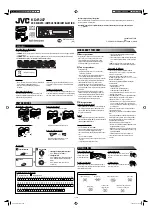
Troubleshooting Procedures
0112-0127 B
133
Understanding Potential Mechanical Problems
Background
The intended function of the FlexStation 3 instrument requires it to have
many moving parts. The operator interacts extensively with the
instrument by introducing various types of plastic disposable plates, tips,
and troughs. Molecular Devices has made every effort to ensure smooth
and reliable operation of the FlexStation 3 instrument. However,
problems can occur. For example:
•
Pipette tips can jam in the rack, possibly due to imperfectly
molded tips.
•
After transfer, an unreleased tip can remain on the nose cone
and be jammed against one of the lower drawers or into another
tip during a subsequent transfer operation.
•
If the tips are accidentally released from the nose cones during
operation, they might fall outside of the rack. To help prevent
frequent tip dropping, periodically clean the pipettor barrels. See
Cleaning the Barrels on the Pipettor Head on page 117
•
If the power fails during a pipetting step, serious damage can
result to the instrument if appropriate corrective steps are not
taken.
As noted, there are several opportunities for mechanical problems within
the fluidics module. Fortunately, these problems will be rare if you
understand how to avoid them. The design of the FlexStation 3
instrument provides the means for successfully recovering from most
problems.
Before Using the Instrument
Molecular Devices recommends that you disconnect the power and open
up the instrument to become familiar with the mechanical parts of the
fluidics module. Observe that it is possible to manually (and always
gently) move the drawers, doors, and pipettor head. Moving the parts
manually is important for recovering from some mechanical problems.
For further information, see
Opening a Drawer Manually on page 132
Note:
Read these instructions before attempting to use the
FlexStation 3 instrument for Flex reads or Endpoint and Kinetic reads.
FlexStation_manual.book Page 133 Tuesday, June 25, 2013 10:22 AM
















































